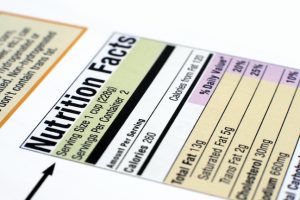 Almost every packaged food product has a Nutrition Facts label listed on the back, giving consumers a glimpse of what they’re actually eating. It can help Americans make healthy, informed food choices, but a recent study from the School of Public Health reveals many people check Nutrition Facts infrequently, if at all.
Almost every packaged food product has a Nutrition Facts label listed on the back, giving consumers a glimpse of what they’re actually eating. It can help Americans make healthy, informed food choices, but a recent study from the School of Public Health reveals many people check Nutrition Facts infrequently, if at all.
“Using Nutrition Facts can help with comparing packaged foods, but we didn’t see a high level of usage,” said lead author and post-doctoral fellow Mary Christoph. “However, young adults who did read Nutrition Facts had better dietary patterns, including eating more fruits, vegetables, and whole grains.”
The study was recently published in the Journal of The Academy of Nutrition and Dietetics.
While some studies have found an association between using Nutrition Facts and eating more produce, little was known about how many people actually pay attention to them and how they impact dietary patterns.

“We wanted to understand which young adults used nutrition labels, what parts of the label they read, and how label use was related to food intake. These questions are important for understanding how to better support young adults in making food choices, and how to meet consumer preferences in terms of label content,” said Dr. Christoph.
In a cross-sectional population study that was part of the larger Project EAT study led by Professor Dianne Neumark-Sztainer, the researchers surveyed nearly 2,000 young adults, aged 25-36, to better understand how the labels are used.
The survey data showed people with the following demographics were more likely to read Nutrition Facts:
- Women
- People with high education and income
- People who regularly prepare food
- People who are physically active
- People classified as overweight
- People who were trying to lose, gain or maintain weight
The research also showed adults who did read Nutrition Facts labels more frequently were most interested in sugars, calories, and serving size.
“This is interesting because even though our study took place before the FDA announced the new Nutrition Facts panel in May 2016, our results broadly aligned with the new guidelines, which will highlight calories and serving sizes in a larger bold font, and break out added sugars from total sugars. This is a good sign because it suggests the new FDA guidelines seem to fit the preferences of the young adults in our study,” said Dr. Christoph.
However, she adds, there are still gaps to fill.
“Only about a third of our study sample used labels frequently when buying a food product for the first time, so, there’s room for improvement,” said Dr. Christoph.
She said researchers should continue to study nutrition label usage and how that correlates to eating choices, as well as investigating effectiveness of label design and messaging. That information, paired with the results of this study, could guide public health programming and educational efforts to encourage consumers to use Nutrition Facts.
“While older adults might be prompted to eat better due to health conditions, we need to find a way to provide support and motivation to young adults to eat well since their diet throughout life can have a major impact on long-term health,” said Dr. Christoph.
* This post was derived from a UMN Research Brief.
